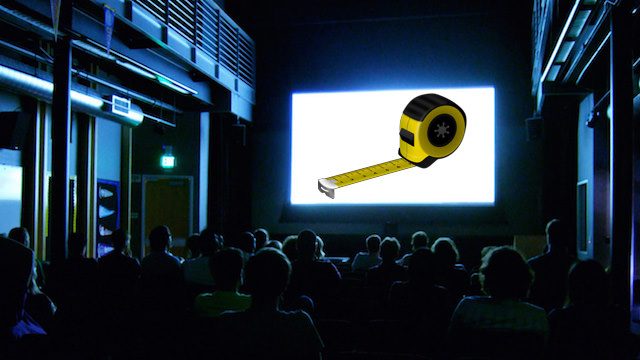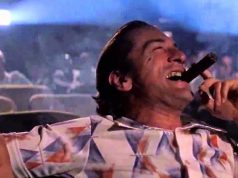
On the matter of movie length, Roger Ebert has summarized what every filmgoer knows intuitively: “No good movie is too long, and no bad movie is short enough.” Or as the old journalism saying goes, “A story should be like a woman’s skirt: long enough to cover the important parts, but short enough to keep things interesting.” (Old journalism sayings tend to be sexist. Don’t blame me.)
The point is, it’s impossible to universally declare a “right” length for movies. Three hours sounds too long — but not to the people watching and loving “Lord of the Rings” it isn’t. An hour and 18 minutes sounds way too short — until the film turns out to be “Date Movie,” in which case an hour and 18 minutes is way too long.
The subject came up recently among movie nerds when it was revealed that this week’s new “Winnie the Pooh” film is a scant 68 minutes. And as it turns out, that includes the closing credits and the animated short that opens the film, “The Ballad of Nessie.” “Winnie the Pooh” itself, without the short and credits, is only about 55 minutes. For this you should pay 10 bucks?
I have an acquaintance who thinks in those terms. Why pay 10 dollars for a 68-minute short-and-feature when the same 10 dollars could get you the 153-minute “Transformers: Dark of the Moon”? Why, that’s more than twice as much value for your dollar! That is his reasoning.
To be fair, he’s a cheapskate who only thinks about money. But he may be onto something. At some point, a movie WOULD be too short to be worth a full-price ticket. Less than 60 minutes is probably where that point would be for most people, psychologically, though it’s worth noting that the Academy of Motion Picture Arts and Sciences (i.e., the Academy Awards) considers anything longer than 40 minutes to be a “feature.” Besides, it’s not like Hollywood is intentionally cranking out 65-minute movies on a regular basis in an effort to defraud us. “Zookeeper” was fraudulent, and it was 102 minutes long.
The first movies were all shorts, of course. What we’d call “feature-length” films were a novelty. Even the features that were produced between 1900 and 1915 were shorter than we’re used to now: “Richard III” (1912), the first American feature, was only 55 minutes; “The Story of the Kelly Gang” (1906), an Australian picture that holds the distinction of being the world’s first feature, clocked in at 70 minutes.
Although features became commonplace by 1920 — America produced 682 of them in 1921 — they continued to be comparatively short through the black-and-white era. This fit with the way the business was run, though. In the 1930s, you’d pay your nickel or whatever for a movie ticket, then watch a newsreel, a cartoon, a short, and a feature. Usually it was a double feature, actually, with the B-movie (the less important one) serving as opening act for a more prominent one. The point is, there was a lot going on. Nobody was going to sit through a double feature where both movies were two hours long, PLUS the opening shorts.
Longer movies also cost more to make (duh), and during the studio era this was a major consideration. You’d have your prestigious exceptions — your big “Mutiny on the Bounty” (1935, 132 minutes) or “Gone with the Wind” (1939, 224 minutes) — but for the most part, studio heads wanted to crank ‘em out as cheaply as possible. The term “B-movie” thus came to be associated with films that were inexpensive, short (often 60-70 minutes), and not very good. They were just fine as the bottom half of a double feature, though.
Newsreels started to become obsolete as soon as TV news became a thing, and the studios eventually stopped making live-action shorts, too, with only the cartoons remaining. And what about the double feature? It went away. The 1948 Supreme Court case of United States v. Paramount Pictures had a dramatic impact on Hollywood, basically ending the studio system as it was then constituted. Prior to that, the studios owned the movie theaters, too, guaranteeing they always had a place to show their stuff, and making it cheaper to do so. (You don’t have to give the exhibitor as big a cut of the ticket sales when you own the exhibitor.) With this no longer allowed, the studios had to sell off their theaters and compete with each other for venues — which meant they had to make better movies. Exhibitors had the power now. They could choose which movies they wanted to show based on which ones they thought would sell the most tickets, and that forced the studios to start emphasizing quality rather than quantity. Production costs went up, the studios made fewer films, and the double feature disappeared.
Today, running times have settled into a fairly predictable pattern depending on genre. Cartoons tend to be 90 minutes or less, owing to children’s shorter attention spans and the painstaking nature of animation. (As computer animation has gotten cheaper and less time-consuming, the movies have gotten longer. The first CG feature, “Toy Story,” was 80 minutes; nine years later, “The Incredibles” was 115.) Somewhere around 90 to 100 minutes is the sweet spot for live-action comedies, too, less if it’s a spoof, more if it’s an improv-heavy Judd Apatow joint. Action/adventure films usually come in at 100-125 minutes; so do straightforward dramas. Your big epic movies and biopics are often longer than that, owing to the amount of material to be covered.
But just as we’ve all seen bloated, overlong dramas that didn’t deserve all the screen time they got, we’ve also seen outstanding shorter movies that didn’t need to be a minute longer than they were. Some examples:
– “Duck Soup” (1933) – 68 min.
– “Bride of Frankenstein” (1935) – 75 min.
– “Dumbo” (1941) – 64 min. (And we don’t see him fly until the last four minutes! All the reviews totally spoiled that.)
– “Bambi” (1942) – 70 min.
– “Rashomon” (1950) – 88 min.
– “High Noon” (1952) – 85 min.
– “Paths of Glory” (1957) – 87 min.
– “Airplane!” (1980) – 87 min.
– “The Purple Rose of Cairo” (1985) – 84 min.
– “Before Sunset” (2004) – 80 min.
– “Once” (2006) – 85 min.
(For the record, “Winnie the Pooh” belongs on that list too.)
— Film.com




